
Gallery Photographers
Partner
Artists-in-Residence
Image City Feature Articles
Gary's Photographic Tips
Newsletter Archive
If you are unable to visit our gallery and would like to purchase photographs from this preview or others in the gallery, please contact the gallery and call 585-271-2540.
Peter Marr's Picks of the Show
Tradition and Transition
by
Carl Crumley and Dick Bennett
July 11 - August 5, 2012
Peter Marr has picked his favorite photos from the show by the guest photographers
and also describes the strength of the images he has chosen.
click here to return to the details of the exhibit
All images copyright by the individual photographers
Basement Fixtures by Dick Bennett Rather than comment on a print from the completed Eastman Common’s project, so wonderfully documented by Dick over one and a half years of photography that resulted in over eight hundred prints, I decided to highlight an image that included one of the skilled crew in a typical workplace environment. What could be better than this outstanding print of an electrician, creatively captured, carefully feeding large power cables into a massive control-box enclosure? This is no household installation, and profoundly illustrates that on this job, muscular strength as well as dexterity in completing multiple electrical connections are needed assets. The lighting in this image is really excellent, and of course it helps to have the electrician wear a bright blue shirt, stand on a red ladder, and have a predominantly gray background, yet even with these elements in your favor, one still has to compose and capture the photograph in the creative manner that Dick has so impressively done. The expressive detail throughout the image is first-rate, from the rafters with the knotted yellow electrical cord, all the way to the mass of black cables, seemingly spewing out like a giant octopus’s tentacles, all struggling to find their proper place in order to feed into the correct connections at the bottom of the panel. Part of a blue jacket casually laid over a box on the far right, together with tools and connectors on the floor, add a delightful touch in this workplace environment. This is an uplifting, especial image, meticulously captured and presented by the author. Smokestack Demolished by Dick Bennett What better way to illustrate Dick’s dedication and hard work to fully document the Eastman Common’s project, than to comment on the spectacular razing of the tallest feature on the site. In this masterly image, he has dramatically captured the very moment when the wrecking ball delivers a direct and telling blow to the top of the smokestack, the initial assault on a structure that has long been a highly visible feature in the neighborhood. The huge crane, superbly delineated against the sky, towers like a giant over its prey, as the initial assault sends a vast shower of bricks, mortar and debris earthwards. Although we marvel at how modern technology can rapidly result in the conversion of a tall chimney into a pile of rubble, one cannot help but think of the hard work, skill and dedication that all contributed to constructing this smokestack many years ago. Upliftingly, this impressive print, resplendently details the striking, circular brick arrays, together with the massive iron bands and vertical supports, elements that have worked in harmony over time, to ensure that this smokestack would survive all of nature’s furies. Although there must be sadness in the fact that this long cherished edifice should meet such a swift and dramatic end, one must also be thankful that this loss, and the subsequent demolition of the surrounding buildings, will result in the construction of a housing complex that will greatly benefit future residents, as well as enlightening the neighborhood. Church Service is Over by Carl Crumley The author is to be congratulated for braving the intense cold conditions to capture a precious moment that is truly inspiring, as we see members of the Mennonite community returning home from a Sunday morning worship service. The setting is just exquisite, with the church situated on a small hill surrounded by a single-railed fence, together with a line of stately trees, appropriately clad in winter’s attire. This is all set against a pale blue sky that is striated with soft yellow clouds, creating a magical backdrop to this charming scene. The graceful snow-clad slopes that are interspersed here and there with remnants of corn stalks and grasses, are divided by a paved rural highway that has been cleared of snow, a road that bends delightfully from a small rise, and sweeps effortlessly down the hill and out of one’s sight. Exiting from the church and proceeding down the paved route, is an expressive line of buggies, resplendent in their shiny black attire. The strong morning side-lighting impressively highlights much of the elegant detail in the carriages and horses, together with emphasizing the exhilaration of racing for home as the buggies in the forefront pick up speed. As we look carefully, we can get a glimpse of some of the Mennonite worshippers even though the windows of their conveyances are tightly closed, and of course, we all know that they are all impeccably dressed in their Sunday best attire. It is the total vista that captures our immediate attention, from which we can spend the time at our leisure to explore every intimate detail that this print offers us. This is as priceless moment, captured so movingly by Carl for all of us to admire and enjoy. Traditional Hay Harvesting by Carl Crumley This impressive image, together with “Amish Farm After the Rain”, are my two favorite “farmscapes” in this inspiring exhibition of memorable photographs, that strikingly illustrate various lifestyles of the Amish and Mennonite culture. Although it was a difficult decision, I decided to comment further on the Traditional Hay Harvesting print, because not only is it a superlative image in its own right, it imbues the very essence of hard work, dedication and traditional mores of these communities. The setting is magical, with alternating bands of deep greens and yellows that sweep effortlessly upwards, to reveal two pristine white buildings that are set majestically against a clear blue sky. This scenic alone would be captivating by itself, but into the foreground, there is a compelling setting of an Amish family harvesting hay, probably with the assistance of close neighbors who have brought their team of Belgian horses to share the workload. In this field the hand baling of the precious product results in sheaves, which in turn, are arranged in their own imposing pattern, as they stand in proud array across the open expanse of stubble. For most of us, this is rare glimpse of an uplifting farm scene, and one cannot help be taken by the fact that you feel that you are actually part of the picture, watching every facet of this time-honored process. It is a truly wonderful “farmscape” that fascinatingly illustrates a much lauded way of life. Scarlet Cast by Bruce C. Elling From Bruce’s outstanding series of prints exhibited in the East Gallery, I chose this particular one to comment further on. Scarlet Cast is an exquisite, creative image, of detail from probably an auditorium or concert hall. Set against part of the lovely sweeping contours of the inside structure, are rows of chairs which curve effortlessly from the foreground, until they eventually disappear from view. What is so electrifying, is that these chairs are bright red in color, a hue that takes on an added vibrancy due to the varied gray values of the background stonework. The lighting is superb, and I love the way the shadows cast by the end seats in each row, create their own powerful statements as they are projected onto the concrete floor. As these shadow’s eventually vanish, and the chairs disappear from view, there is a possibility that our interest may also wane as one is immediately confronted with a metal barrier fence, probably put in place to prevent people from walking further on the concrete ledge. For myself, I have no such obstacles in my path, for my eyes sweep along the curve of the chairs until I can view the stage, which I know must be at the far end of this magnificent building. I also see that every seat is filled with enthusiastic concertgoers, listening intently as I am, to every note that lovingly comes from a symphony orchestra playing on stage. This is a resplendent and uplifting image, wonderfully seen, captured and presented, a print that is not just of stellar, architectural designs and compelling color harmony, but an image that is alive with people and music. 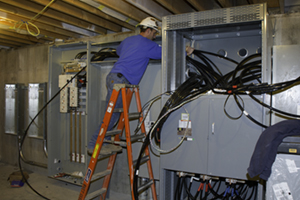
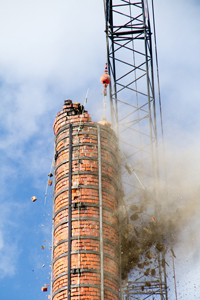
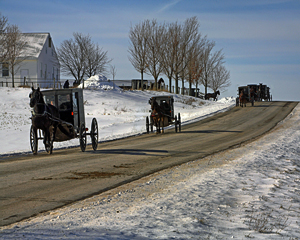
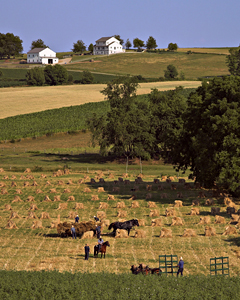
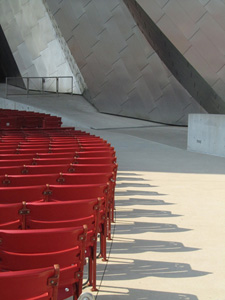
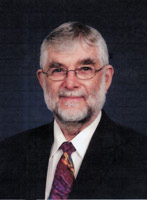
Peter MarrWe are very grateful to Peter for his thorough review and selection for Peter's Picks. Peter was born in England in 1935 and came to live in the United States in 1968. He worked for the Eastman Kodak Company for 34 years, retiring in 1998. During his employment and continuing into retirement, he has been an enthusiastic photographer. His photography has won him numerous awards throughout Kodak and in International Salons, including 5 George Eastman Medals, which is the top honor awarded to the most outstanding picture in the Annual Kodak International Salon. He has served as a judge in both local and international photographic competitions for the past 20 years, and is a Past president of the Kodak Camera Club and past chairman of many of the Kodak Camera Club organizations. In the past five years or so, he has devoted his photographic skills and interest into nature photography, notably bird photography. His bird photography has been the subject of several one-person exhibits, the most recent being at Ding Darling NWR, in Sanibel, Florida, The Roger Tory Peterson Institute in Jamestown, New York, and at the Webster Public Library in Webster, NY.
Image City Photography Gallery ♦ 722 University Avenue ♦ Rochester, NY 14607 ♦ 585.271.2540
In the heart of ARTWalk in the Neighborhood of the Arts